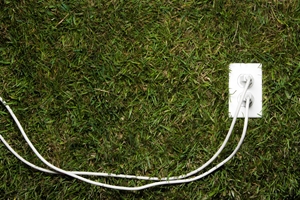
Even if your custom designed shed is generally used for practical purposes like rearing livestock or perhaps as a workshop, that does not preclude you from being able to manage some great beautification strategies. While we're big fans of the beautiful and deep range of colours available from COLORBOND®, sometimes you also want something else to really make your custom design pop visually.
While windows, whirlybirds and more all offer practical additions that you can research and add in the Shed Boss App, the living wall is one option that many people take on when they have a facade that needs decorating. Let's take a look at how to go about it.
Wait, what is a living wall?
Living walls are vertical structures, put up against either a wall or free standing on their own. In the case of creating one for your shed, it's likely you will be using it for either an interior or exterior wall. They are increasing in popularity around the globe, and can make a trendy and healthy addition to any space.
What are the benefits?
Well, apart from looking incredible, a living wall is great for the air around you. The plants that exist in a green wall and are fed through a hydroponic system can greatly improve air quality in your custom designed shed, as well as be aesthetically pleasing. If you use your shed as a commercial shed office space (perhaps a shared office system?), then a living wall could actually improve productivity by clearing the air, as identified by the Lawrence Berkeley National Laboratory.
On top of this, a researcher from the University of Basque School of Mining and Public Works Engineering in Spain has found that green walls also insulate and reduce noise in your shed, especially at low frequencies. That kind of protection sounds perfect if you conduct noisy activities inside!
What kind of plants can I use?
A Green Building Council of Australia (GBCA) report investigated the benefits and drawbacks of having a living wall, and determined some key factors in the foliage you choose for this feature. Firstly, the plants must be able to withstand higher temperatures than usual, especially given they are likely to be sitting indoors. This may be offset somewhat by the presence of whirlybirds and windows, but overall must be considered seriously.
Following that, there could be a lack of wind and water that negatively impacts the plants used, so this must be factored into living wall plans. Of course, when you work with Shed Boss we can apply to local councils for the permits and approvals to connect water to your shed, so this may end up being less of a problem than first thought.
Given these criteria, the GBCA recommended mat or clump-forming plants as particularly efficient for use in a living wall. The Creeping Myoporum, Tasteless Stonecrop and Winter Apple were named and praised within the report, so if these work for your situation, may be a great place to start.
Sounds great! Any drawbacks?
Unfortunately, building and maintaining a green wall can be tricky and expensive. But if you're willing to let the Shed Boss experts build your custom designed shed for you, maybe consider getting the help of a horticulture expert to get your living wall up and running. It's a beautiful, healthy, fun way to add a unique feature to your shed.
Building a living will will take careful planning and an acute awareness of what you want – just like constructing a shed! Come and speak to us if you are considering creating your own dream shed or garage design.
